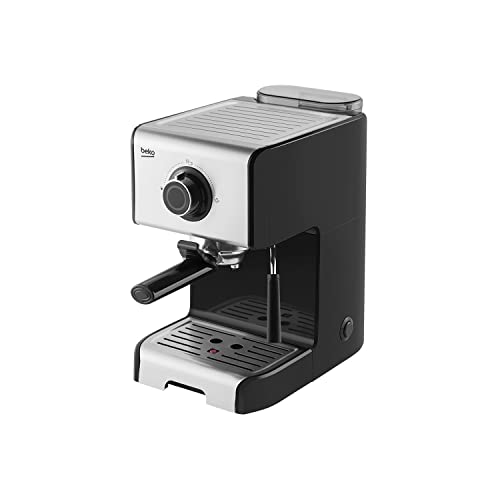What to Look For in a Commercial Espresso Machine
There are a myriad of things to take into consideration when buying a commercial espresso machine. The type of espresso machine that is ideal for your establishment will depend on the quantity and purpose of use and barista skills.
Double boiler systems offer the capability to brew and steam simultaneously. It also reduces recovery time between pulls. Proportional-integral-derivative (PID) temperature control manages on/off cycles for optimal boiler temperatures.
Productivity
A commercial espresso machine is designed to handle a much greater volume of coffee brewing than an espresso machine at home. A domestic espresso machine would not work in a professional setting.
A high quality commercial machine will be able to serve up to 100 cups of coffee per hour during peak times. This is a huge benefit for busy workplaces, stopping employees from having to wait for a long time to get their coffee.
A coffee maker can aid in bonding between workers. Teams of employees often make a habit of sharing coffee with one another, which could facilitate collaboration and teamwork within the workplace. Having a dedicated space to enjoy coffee can help new workers to feel at comfortable in the workplace, breaking down any barriers between them and senior staff members.
Commercial espresso machines come in various sizes to cater for different needs. Certain models are fully automated and some can be programmed with pre-programmed espresso sizes so that baristas don't have to guess the correct size. This is especially important for companies with untrained baristas, since inaccurate shots can significantly affect the flavor and intensity of espresso that is brewed. In addition, it is best to buy ethically sourced and manufactured commercial espresso machines that support the communities in which coffee is harvested. This will ensure a top quality product, and reduce the negative impact on the environment.
Safety
Espresso machines can cost as much money as a car that is compact. They're also designed to crank out hundreds of drinks and shots throughout the course of an entire day. The high volume of operations create some unique work health and safety risks for workers, so it's crucial to think about the risks that could be associated with an espresso machine that is commercially used.
Be aware that commercial espresso machines are likely to utilize warm water. compact espresso machine can lead to the growth of bacteria. Poorly maintained machines that are not descaled and cleaned regularly may accumulate spent espresso. This could cause it to turn rancid, and potentially cause illness if consumed by customers. A commercial espresso machine that has steam wands without an effective seal may allow for bacterial growth in the milk frothing mechanism, as it might not be able to reach temperatures sufficient to kill all bacteria.
Consider the type of beverage you'll serve and the number of cups an hour your space can handle when selecting a commercial coffee maker. You'll also want an espresso machine with automation features that make it much easier and quicker to serve your customers your favorite coffee drinks. Make sure you get a warranty that includes both parts and labor. This will ensure that any technical problems will be solved quickly.
Energy Efficiency
The power requirements of commercial espresso machines are considerably greater than home models. This is due to the fact that professional espresso machines have heavier frames and larger boilers to accommodate the many group heads required for standard cafe production. These machines operate at a higher temperature and are generally located indoors (such as in a coffee shop or restaurant) where the electronic components could overheat.
The boiler of an espresso machine for commercial use heats and stores water which has been pressurized using an electric pump. The water is then used for brewing and steaming espresso. The boiler is made up of a number of copper tubes that are heated by electric elements. When the brew level sensor senses that the water has reached its desired level the solenoid valve will open to allow the boiler to be filled with fresh water. The heating element shuts off.
There are four different types of espresso machines. They are distinguished by their ability to steam or brew the coffee: TB (brewing-only), TX (twin-boilers) HX (double automatic), and DA (double automated). TB and TX machines have stable brew temperatures, while DA offers rapid steaming using one boiler. Many cafes are switching to HX machines since they have been shown to provide the best of both worlds, in terms of steam temperature and brew temperature.
Maintenance
Like cars that require regular tune-ups commercial espresso machines require regular maintenance to function smoothly and efficiently. If you maintain your machine it will provide you with a better tasting coffee and it will last longer.
Cleaning your espresso machine is a regular ritual, but it's vital to clean certain components at a deeper level. There's likely to be residue from the coffee grounds and milk products inside the machine, which can cause the breakdown of various components over time. Regular cleaning will keep your espresso machine in tip-top condition.
Most commercial espresso machines need descaling every three months. This procedure requires some extra steps over regular cleaning, so it's best to go through your manual to ensure you're following all the directions. Descaling involves using a solution to dissolves scale from the water tank. To complete this task you'll need to place a container underneath the steam wand and, in some units, under the coffee spouts. Follow the instructions on your specific model.

Another aspect of maintenance is changing the water filters. This can be easily forgotten but is essential to keep in mind so you don't end up with a build-up of mineral deposits. Examine for calcification. It can be difficult to remove in the spray head.
